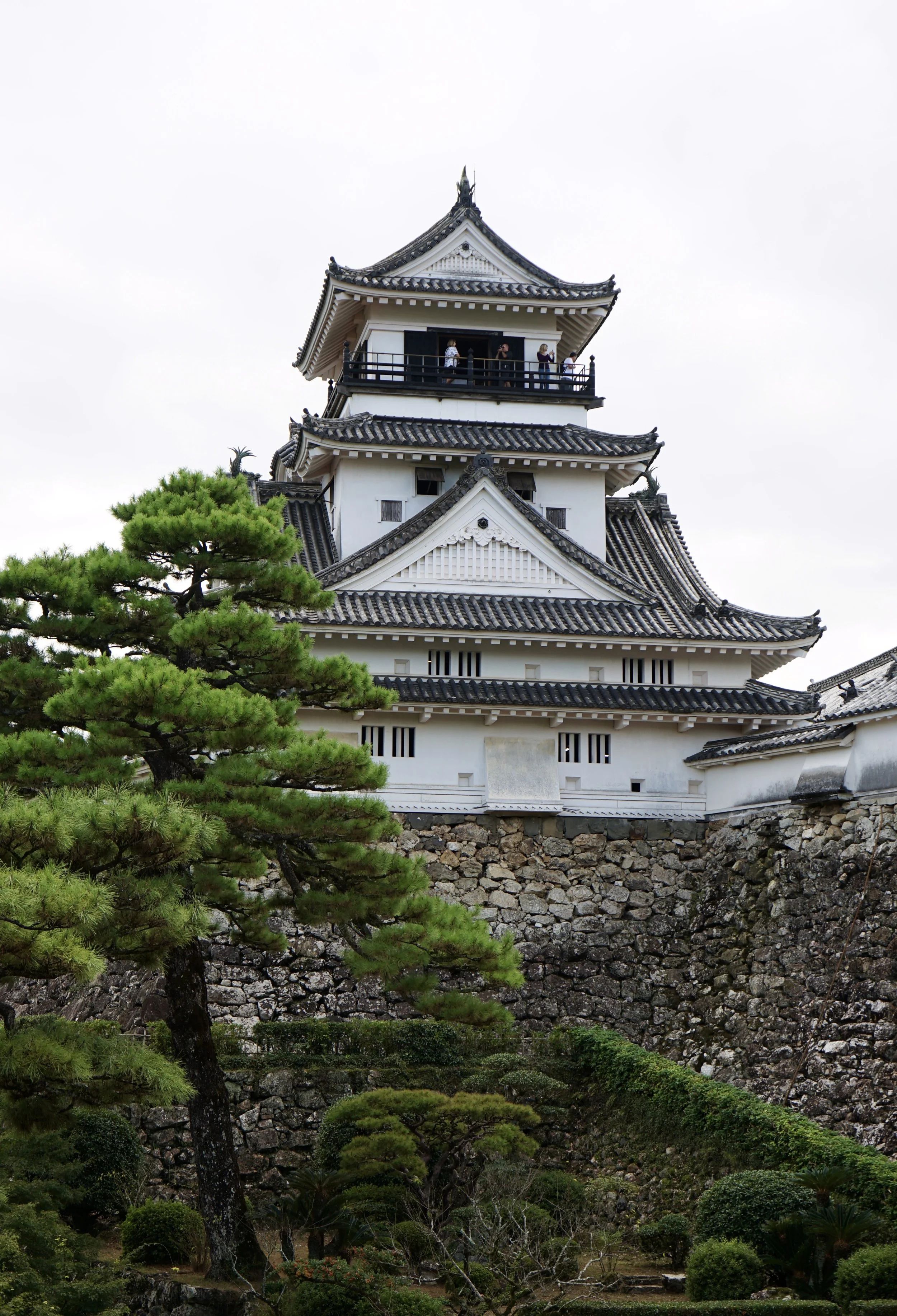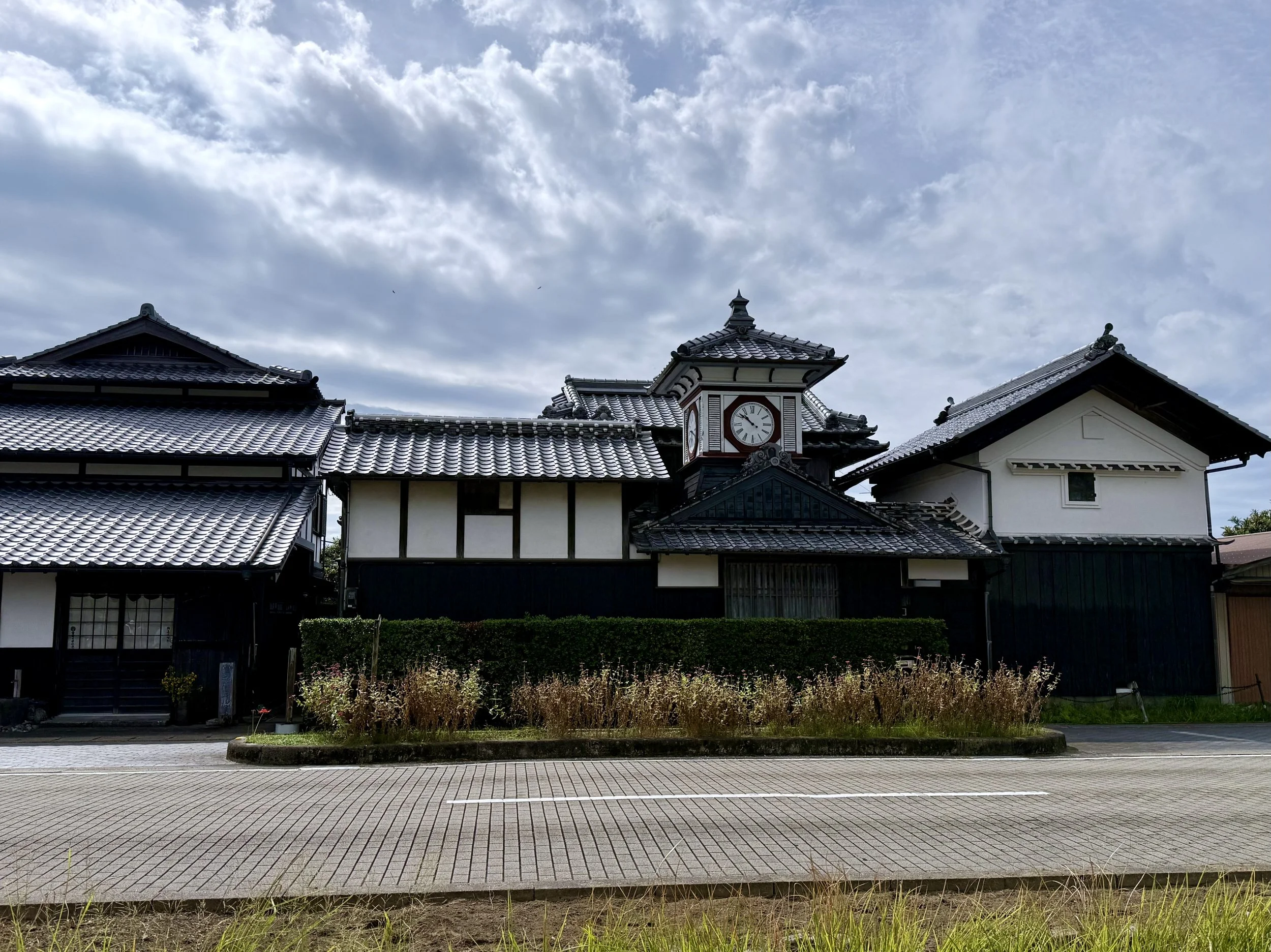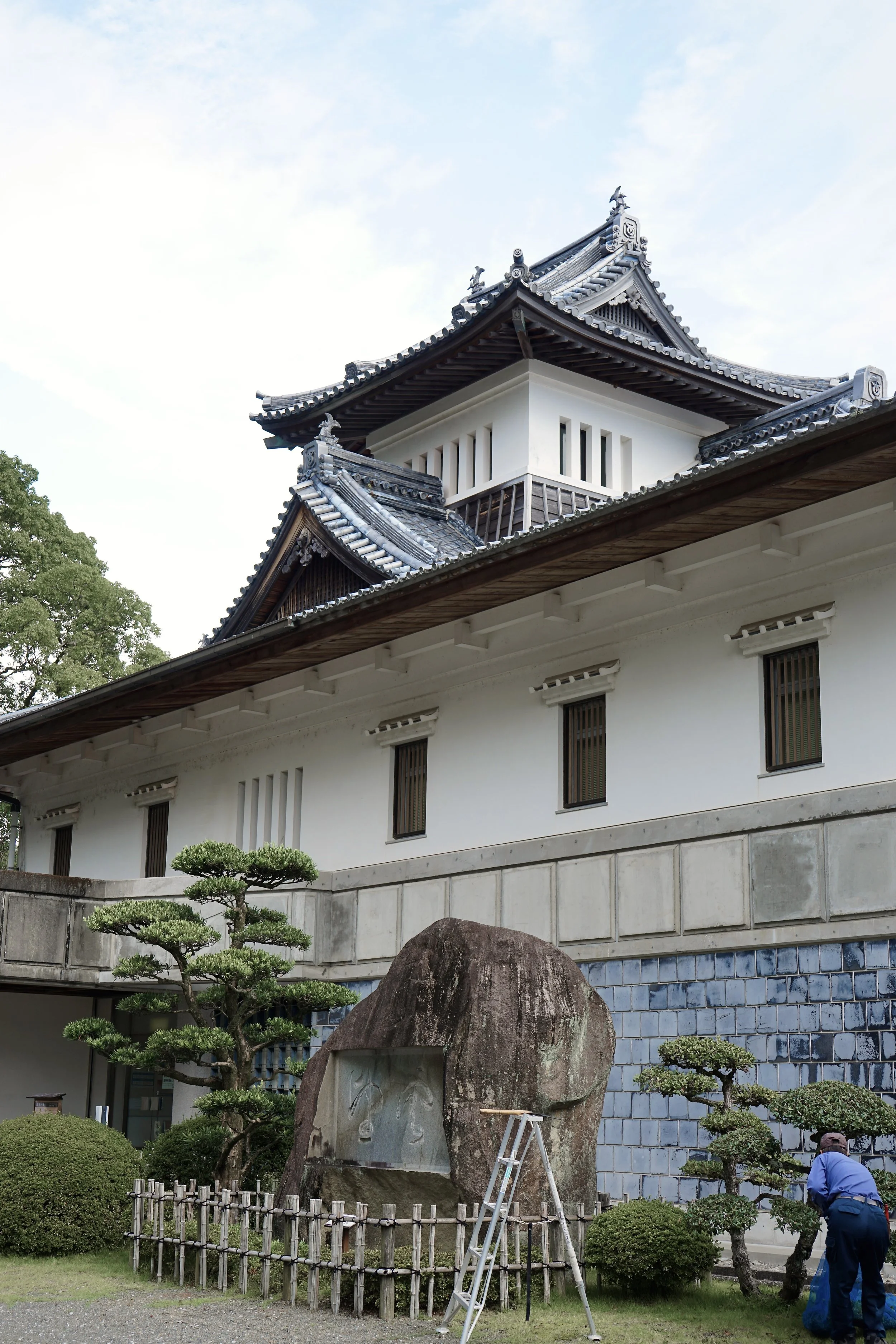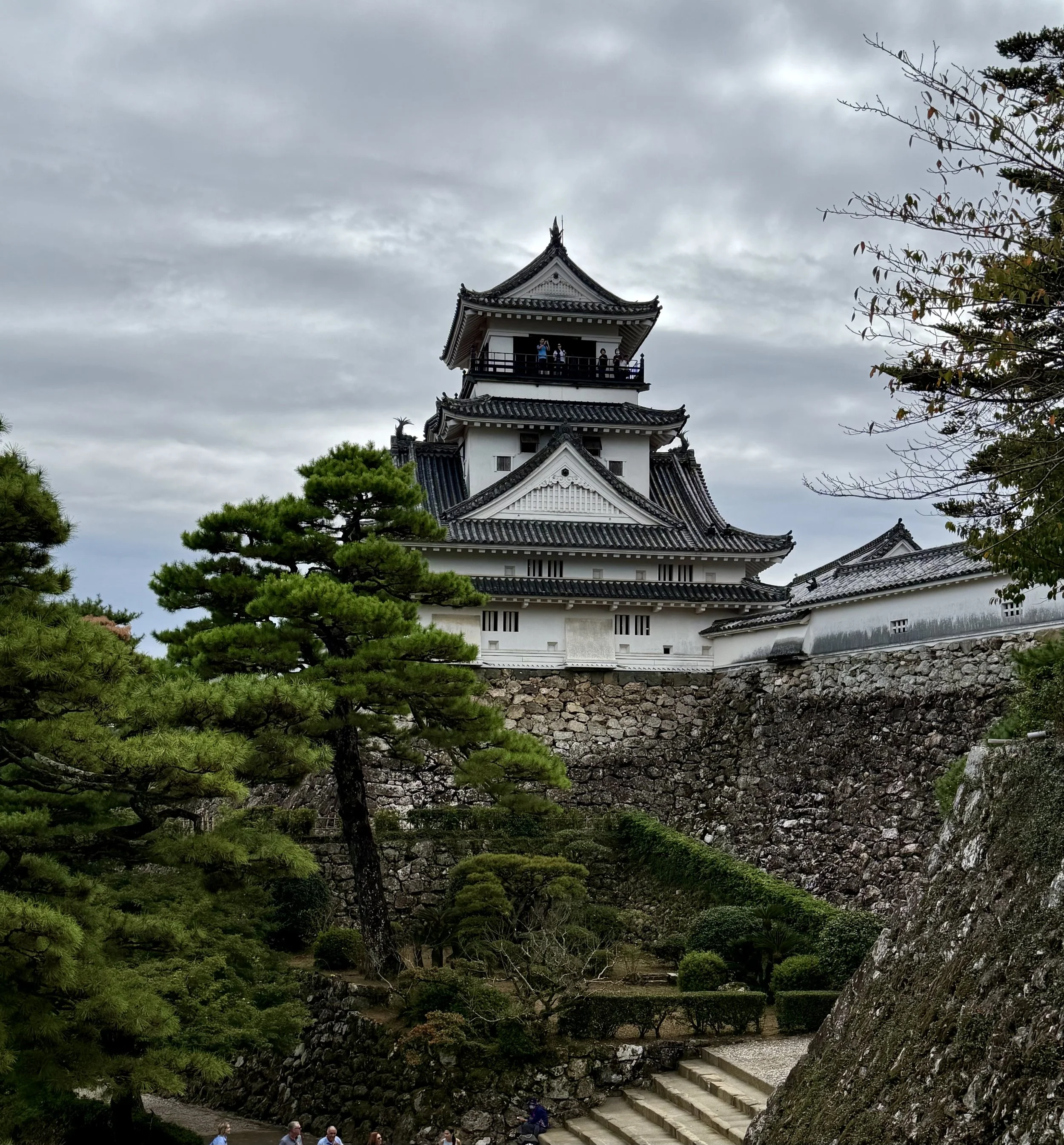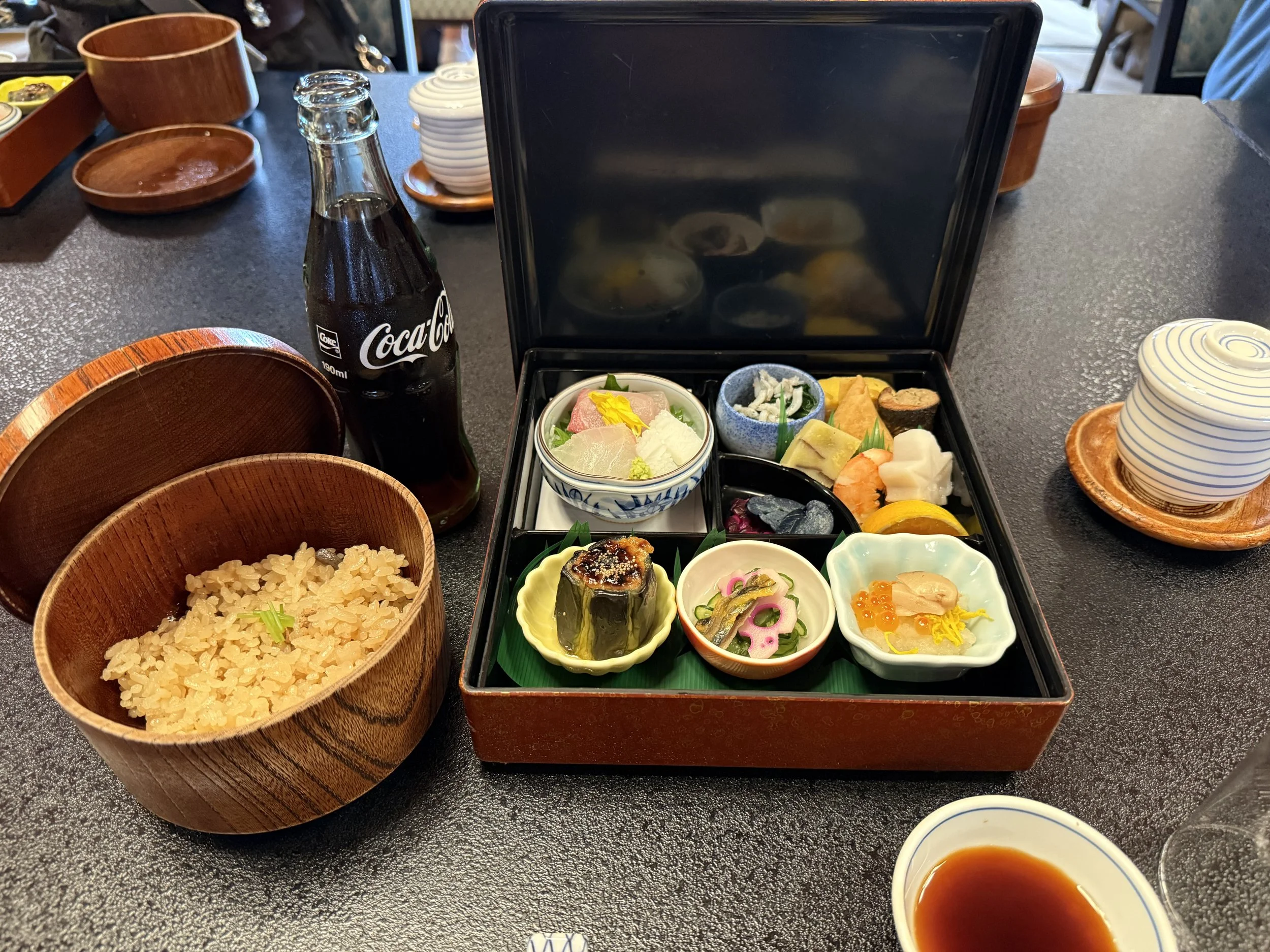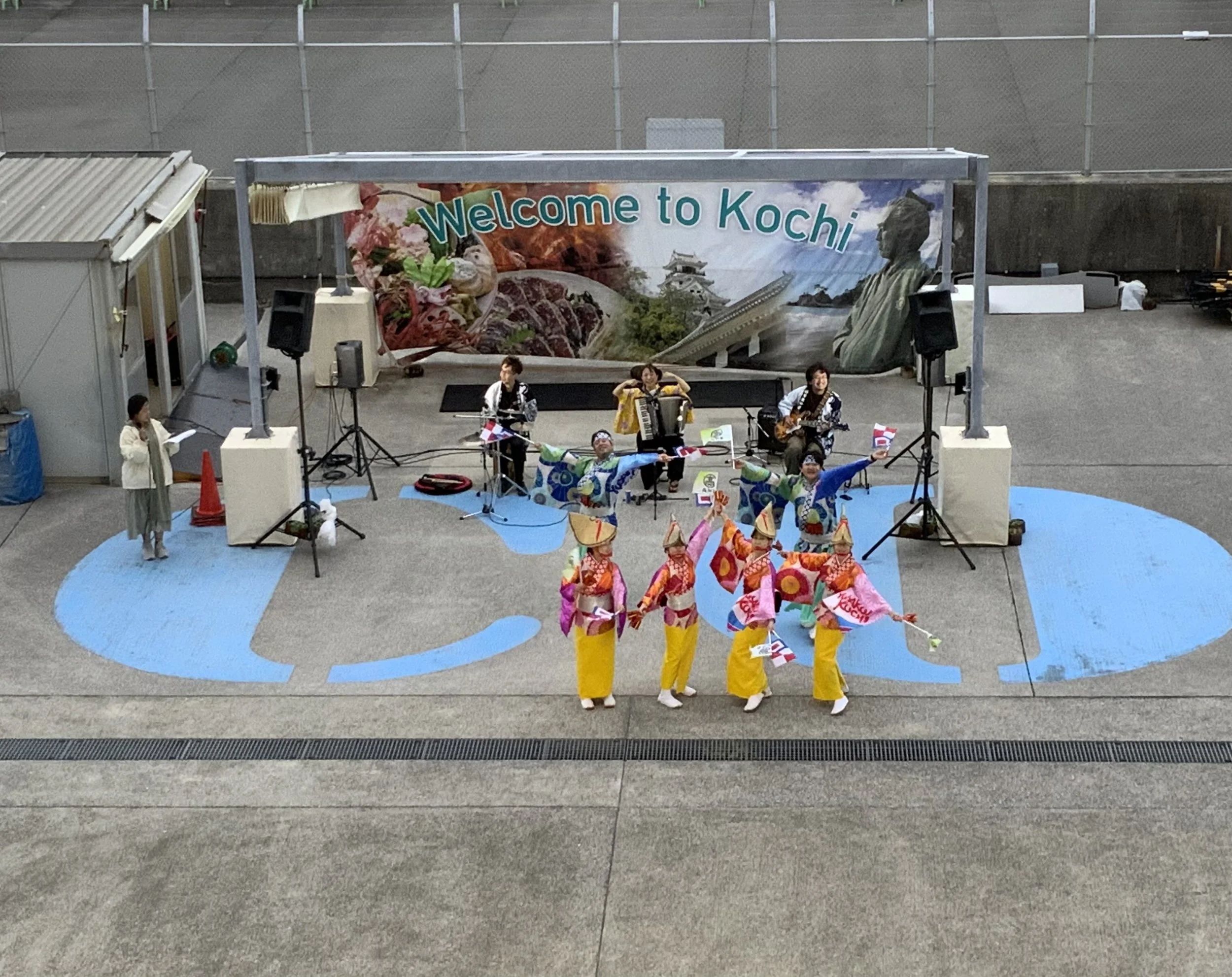Kochi, Japan
Kochi was quaint and cute, a coastal city blending old traditions with small bursts of modern life. I joined a guided tour to see its highlights. The port itself was unremarkable, a practical arrival point lined with cranes, containers, and warehouses, but there were small touches of charm. “Welcome to Kochi” was painted in large blue letters across the pavement, and inside the terminal a few pop-up shops sold souvenirs to arriving passengers. A man dressed as a samurai mascot greeted visitors and posed for photos, adding a bit of fun to an otherwise functional setting.
Once we boarded the bus and left the dock area, Kochi began to show more of its character. The streets were quiet, the pace unhurried. Traditional homes lined the roads, and the distant hills softened the city’s industrial edges.
Located on the southern coast of Shikoku Island, Kochi is smaller and more personal than Japan’s major cities. Its scale makes it easy to explore in a day. Our first stop was Katsurahama Park, one of the city’s most scenic coastal areas.
Katsurahama Park
Katsurahama Park is known for its open views of the Pacific and its pebble beach, often described as black, though to me it looked more gray and white. Swimming isn’t allowed because of strong currents, but it’s a peaceful place to walk, take photos, and breathe in the sea air.
At the center of the park stands the Sakamoto Ryoma Statue, honoring one of Kochi’s most important historical figures. Ryoma helped guide Japan’s transition from feudal rule to modern government, and his story is deeply tied to Kochi’s identity.
The park is built on a slope, with a long paved path leading to an overlook and a series of uneven stone steps that drop toward the beach. It’s not strenuous, but the incline can be tiring on the return. Near the entrance, small shops sell local snacks, ice cream, and drinks, while the Katsurahama Aquarium sits just above the shore, showcasing marine life native to the region. The nearby Ryoma Memorial Museum and Katsurahama Shrine are also worth a short visit if time allows.
Aki City
After about an hour, we left the coast and drove inland to Aki City. Our stop was the Aki City Museum of History, which focuses on regional culture and samurai heritage. I’m told it features armor, swords, and other artifacts from the area’s ruling class. We didn’t go inside, but the grounds were well-kept, with a modern building set amid neat landscaping.
As we walked through the surrounding streets, I began noticing the rooftops. Many homes in Kochi are topped with silver-gray tiles that catch the light like fish scales. It’s a distinct local feature that ties the city’s older neighborhoods together.
We passed a small school where children were playing outside before reaching a model of a traditional Japanese home. We removed our shoes and stepped inside. Tatami mats covered the floors, and display boards explained the home’s layout and history. Sliding paper doors divided the rooms, and a small hearth sat at the center. It wasn’t elaborate, but it gave a simple, grounded look into daily life before modernization.
From there, we continued on foot to the Doi Kachu Samurai Residence.
Doi Kachu Samurai Residence
The Doi Kachu Samurai Residence, built in the 1800s, belonged to a mid-ranking samurai family who served the local lord. The house sits at the end of a narrow lane surrounded by wooden homes with the same silver-gray tile roofs seen across Kochi.
We didn’t go inside, but even from the street, the residence’s craftsmanship stood out: dark wooden beams, delicate sliding doors, and layered roof tiles. The air carried a faint scent of overripe yuzu, a local citrus grown throughout the region. This was also where several people in our group discovered that the nearby restrooms were the traditional squat kind, which caused some quiet hesitation before everyone regrouped and carried on.
Kochi Castle
Back in the city, Kochi Castle rises from a wooded hill above downtown. It’s one of Japan’s few castles where the main tower still contains much of the original wood and materials from its 17th-century construction, giving a true sense of its age and history. Built by the Yamauchi clan, it served as both a fortress and a center of local government.
At the base of the hill stands a bronze statue of Chiyo, the wife of Yamauchi Kazutoyo, the castle’s first lord. According to local history, she sold her wedding kimono to buy him a horse that helped advance his military career. The statue shows her beside the horse, a quiet but meaningful tribute to the people who shaped the castle’s story.
We joined a steady flow of visitors climbing the sloped path to the main tower. The stone steps are uneven and steep in sections, but shaded courtyards along the way give you room to pause.
Before entering, visitors must remove their shoes, so bringing socks is recommended. The interior is simple but detailed. Thick wooden pillars support the upper floors, and the rooms are lined with displays of samurai armor, swords, and weapons once used by the Yamauchi clan. Hanging scrolls, maps, and faded documents line the walls, showing what Kochi looked like during the Edo period. Some rooms hold scale models of the castle and town, and on the upper levels, narrow windows with heavy shutters open to views once used by guards to watch the grounds below.
A narrow staircase leads up to the tower. The steps are steep and polished smooth from centuries of use. Several people in our group gripped the rails and took their time, while taller visitors had to duck under the low beams on each level.
At the top, the effort pays off. A wide view stretches across the city, the river glinting below and green hills framing the horizon. The descent was quicker than the climb, though the steep stairs kept everyone cautious. People moved slowly and held the railings, careful with each step until they reached solid ground again.
Admission is 500 yen per adult, and an hour is enough for an unhurried visit.
Lunch at Tokugetsurō
We ended the tour with lunch at Tokugetsurō, one of Kochi’s oldest and most respected restaurants. The building dates back to the Meiji era and still retains its wooden beams and courtyard garden. Guests remove their shoes before stepping onto the tatami floors, where servers quietly deliver trays of lacquerware and ceramics.
The meal was a kaiseki-style presentation, precise and beautiful, with sashimi, small seafood bites, pickled vegetables, and other seasonal items. I admired the presentation more than the flavors. I don’t eat much seafood, so I left most of it untouched, but I could appreciate the artistry that went into each dish.
The setting was calm and traditional, even if the meal itself wasn’t quite for me.
As the ship prepared to depart, a group of local performers gathered on the pier for a send-off. A small band played traditional music while dancers in colorful costumes, pink, yellow, green, and blue, moved across the concrete, each holding naruko, wooden clappers that clicked in time with the music. Behind them, a large flag with Kochi’s emblem rippled in the wind.
It was a performance a lively and sincere performance. A cheerful farewell that gave Kochi a lasting warmth as we sailed away.
If you have more time in Kochi, consider visiting:
• Hirome Market – A bustling indoor food market near the castle known for local dishes like seared bonito (katsuo no tataki).
• Shimanto River – One of Japan’s cleanest rivers, ideal for scenic drives or kayaking.
• Muroto Geopark – A coastal UNESCO site known for its dramatic cliffs and ocean views.

